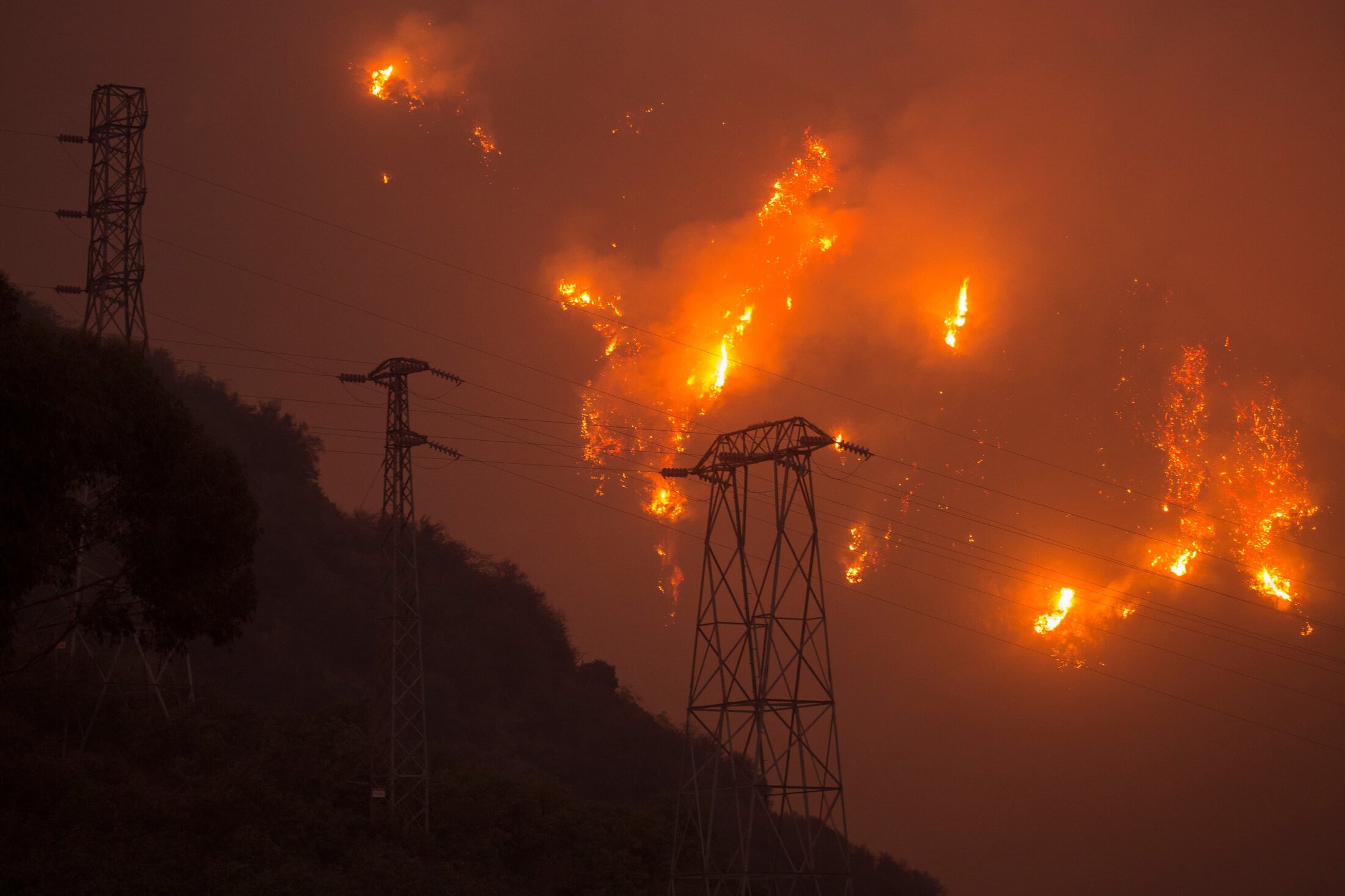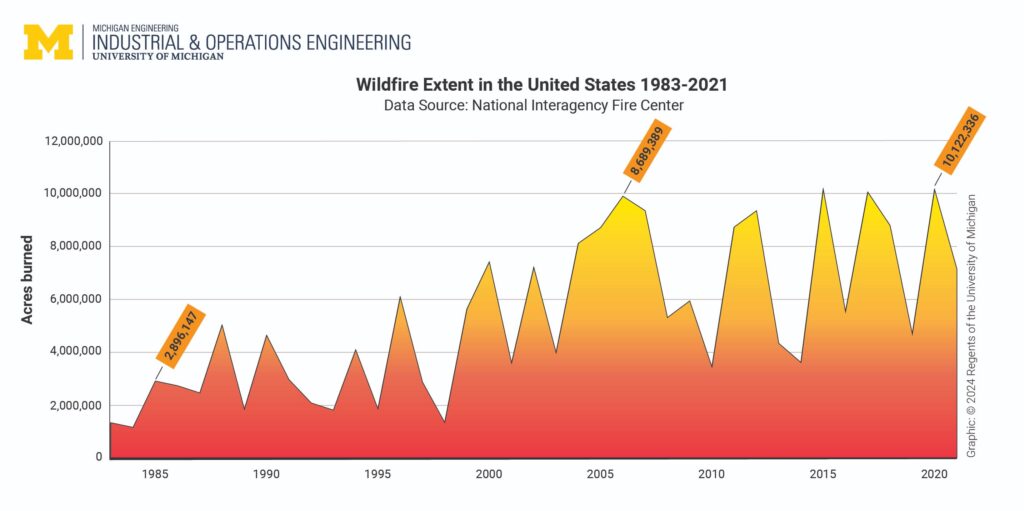
Shifting power operations to reduce wildfires
New method can help avoid public safety power shut-offs during fire-prone climate conditions

New method can help avoid public safety power shut-offs during fire-prone climate conditions
In dry, windy conditions, rerouting power flows through vulnerable parts of the grid can decrease the probability of wildfire ignition, according to a new study led by researchers at the Lawrence Berkeley National Laboratory including contributions from a University of Michigan researcher.
The extent of areas in the United States burned by wildfires has increased each year since the 1980s and that trend will only continue under warmer, drier conditions.

Many wildfires are ignited by human activity, and power systems are sometimes at fault. During dry, windy weather, large power flows traveling through overhead lines can trigger sparks that lead to fires. In turn, wildfires can wreak havoc on power systems. Between 2000 and 2016, California wildfires inflicted $700 million in damages to transmission and distribution systems.
In 2019, some California utility companies began implementing “public safety power shutoffs” in specific areas to reduce the risk of fires caused by electric infrastructure.
“The residents of California had to choose between electricity and living without wildfire,” said Ruiwei Jiang, an associate professor of industrial and operations engineering at the U-M and co-author on the paper. “In a time when our work, play, and even transportation relies on electricity, this is a hugely disruptive tradeoff for residents.”
Previous efforts to solve this problem have focused on optimizing the selected areas of the grid to be de-energized in a power shut-off scheme.
“Adverse weather conditions that can lead to wildfire events might become more frequent and complete shut-offs should not be the only alternative to deal with them,” said Alexandre Moreira, a research scientist at the Lawrence Berkeley National Laboratory and lead author on the study.
“Our methodology aims to improve decision-making in power systems operations so as to help utilities keep serving customers while reducing the risk of wildfire ignitions.”
The study, recently published in IEEE Transactions on Power Systems, proposes a new optimization model capable of determining network topology changes—or shifts in the route of electricity flow—to reduce the level of power flows through vulnerable areas of the grid to decrease the probability of wildfire ignition.
The model uses a decision-dependent uncertainty framework, where certain choices can make outcomes more or less likely. In this case, the optimization model assesses how various power system operations decisions influence the probability of power line failure due to a potential wildfire ignition.
Results demonstrate that by decreasing the energy flow through areas where wildfire ignition is most likely to occur, power system operators can reduce the risk of line failure while continuing to supply electricity.
Moving forward, utility companies could apply these results—for example, by changing the topology of the distribution networks—prior to a season of dry and windy weather.
“Performing these minimal changes to existing electric power infrastructure can greatly reduce the risk of wildfire ignition and avoid costly damages,” said Jiang.
Future research to pinpoint where upgrades to line segments with switching devices are most needed can enhance the flexibility of power system operations, helping to cope with more frequent and widespread wildfires.
This work has been funded by the U.S. Department of Energy, Office of Electricity, under the contract DE-AC02-05CH11231. Jiang was also supported in part by the U.S. National Science Foundation, under the grant ECCS-1845980.
Additional co-authors: Miguel Heleno of Lawrence Berkeley National Laboratory; Felipe Piancó, Bruno Fanzeres, and Alexandre Street of Pontifical Catholic University of Rio de Janeiro; Chaoyue Zhao of the University of Washington in Seattle.
Full citation: “Distribution system operation amidst wildfire-prone climate conditions under decision-dependent line availability uncertainty,” Alexandre Moreira, Felipe Piancó, Bruno Fanzeres, Alexandre Street, Ruiwei Jiang, Chaoyue Zhao, and Miguel Heleno, IEEE Transactions on Power Systems, (2024). DOI: 10.1109/TPWRS.2024.3353593
Written by: Patricia DeLacey, University of Michigan College of Engineering